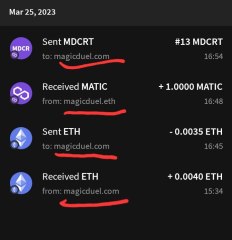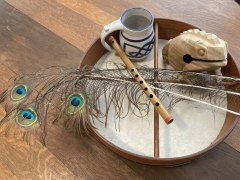-
Images
-
Posts
387 -
Joined
-
Last visited
-
Days Won
4
Content Type
Profiles
Forums
Events
Gallery
Downloads
Posts posted by Junior
-
-
-
-
 Hello One and All! Your Local TST Broker Here!
Hello One and All! Your Local TST Broker Here!
First off I would like to wish everyone a happy and joy filled MD Birthday.
Secondly I wish to welcome you all to the first ever and one of many more to come, TST auction hosted by me.
In the assumption that many players will come back to celebrate with us all and the new players will have the chance to experience their very first Birthday with us I've decided to run my first auction as Credit Ticket Broker. So go out and about trade, buy, sell those TST because I have a great piece for auction this time. I mean you all know me I am a collector of the finer things so this is a chance to give others the opportunity to gain something a little nice.
This time I will be auctioning a nice and rare...
Well wait first lets go over the fine print and rules shall we?
 Rules:
Rules:
- Bidding Will Start At 00:00 Of MD's First Birthday Date.
- All Bids are to be made on this topic.
- All Bids are to be in the form of TST Only.
- Payment Must Be Delivered at the End of Auction.
- Bidding Ends at MD's Last Birthday Date, Plus 24Hrs From Last Bid
 Auction Piece
Auction Piece
The Piece for Auction this Period is a Creature ID # 6 AKA a Darkling! Thats right folks you all have the chance to own your very own Darkling!
*edit rules
-
-
New action place-able on clickables that will scatter all online players in the same location with the clickable (except the one triggering it),
If you're the one triggering it you won't get moved.
-
-
12 minutes ago, Muratus del Mur said:
Bones -> Headless Skeleton (Later to be combined with a skull for a full skeleton)
YES, i love this, can be a way to assamble a skeleton and then later on use the combiner to create a skeleton creature
This is what i meant in my post
 there is already CID 19 maybe finally bring it out? its skeletony
there is already CID 19 maybe finally bring it out? its skeletony
junior
Bushies > orange JUICE (absolutely a yes, this will make it interesting because bushies are hard to gether when anyone can steal your progress . I like the use of bushies, but maybe not orange juice, but something related to bushies otherwise. Juice is by definition something that expires and it will be to expensive to make just to expire, unless it offers a significant advantage?)
By MD item definition Bushies are from oranges (MD is slow so I can't look (its not loading) but i'll update the post) so unless we change the definition to go along with the new concept..
-
Bushies > orange JUICE
Bones > skeleton > CID?

Memory sone > memory orb? (to permanently learn a spell 2 casts?)
-
BAD IDEA
-
The are simply all the forgotten souls in Necro.
-
Tuck Everlasting
-
Happy Day Mur
-
Happy Birthday to you both, Juba keep on aging keep on winning ::P
-
Thanks to all :D
-
Transaction Complete
-
5gc
-
Okay Mur I found a few keys points which intrigued me not to answer but elaborate in a sense your question. While you ask if the earth is flat or round I have come up with the answer that is is neither "technically neither." Rather the earth is known as an Oblate Spheroid which by definition is "A body that is shaped like a sphere but is not perfectly round, especially an ellipsoid that is generated by revolving an ellipse around one of its axes." So what I am trying to say is give you yet an alternative to what you view as the only 2 possible forms flat or round.
the following is the Cartesian equation which is used to calculate an Oblate spheroid's dimensions.
For a spheroid with z-axis as the symmetry axis, the Cartesian equation is
 (1)
(1)The ellipticity of an oblate spheroid is defined by
 (2)
(2)The surface area of an oblate spheroid can be computed as a surface of revolution about the z-axis,
 (3)
(3)with radius as a function of
 given by
given by (4)
(4)Therefore


 (5)
(5)

 (6)
(6)

 (7)
(7)

 (8)
(8)where the last step makes use of the logarithm identity
 (9)
(9)valid for
 . Re-expressing in terms of the ellipticity then gives
. Re-expressing in terms of the ellipticity then gives (10)
(10)yielding the particular simple form
 (11)
(11)(Beyer 1987, p. 131). Another equivalent form is given by
 (12)
(12)The surface area can also be computed directly from the coefficients of the first fundamental form as


 (13)
(13)

 (14)
(14)Note that this is the conventional form in which the surface area of an oblate spheroid is written, although it is formally equivalent to the conventional form for the prolate spheroid via the identity
 (15)
(15)where
 is defined by
is defined by (16)I'll have more ideas tomorrow
(16)I'll have more ideas tomorrow -
3gcs
-
5gcs
-
Its fine, If he hoards them for too long I will steal them :D
Rules state as long as I am active they belong to me :P also I switch between them from time to time.
-
I am looking for the following two avatars if anyone has them or in their MDShop contact me and we make work out a deal.
-
Is that you?! Mur?
-
-
bid over? Creature belongs to Wide?

















First TST Auction
in Central Market
Posted · Edited by Juni0r
Current top bidder Grido at 4 TST who will take him out? and gain a nice Darkling!